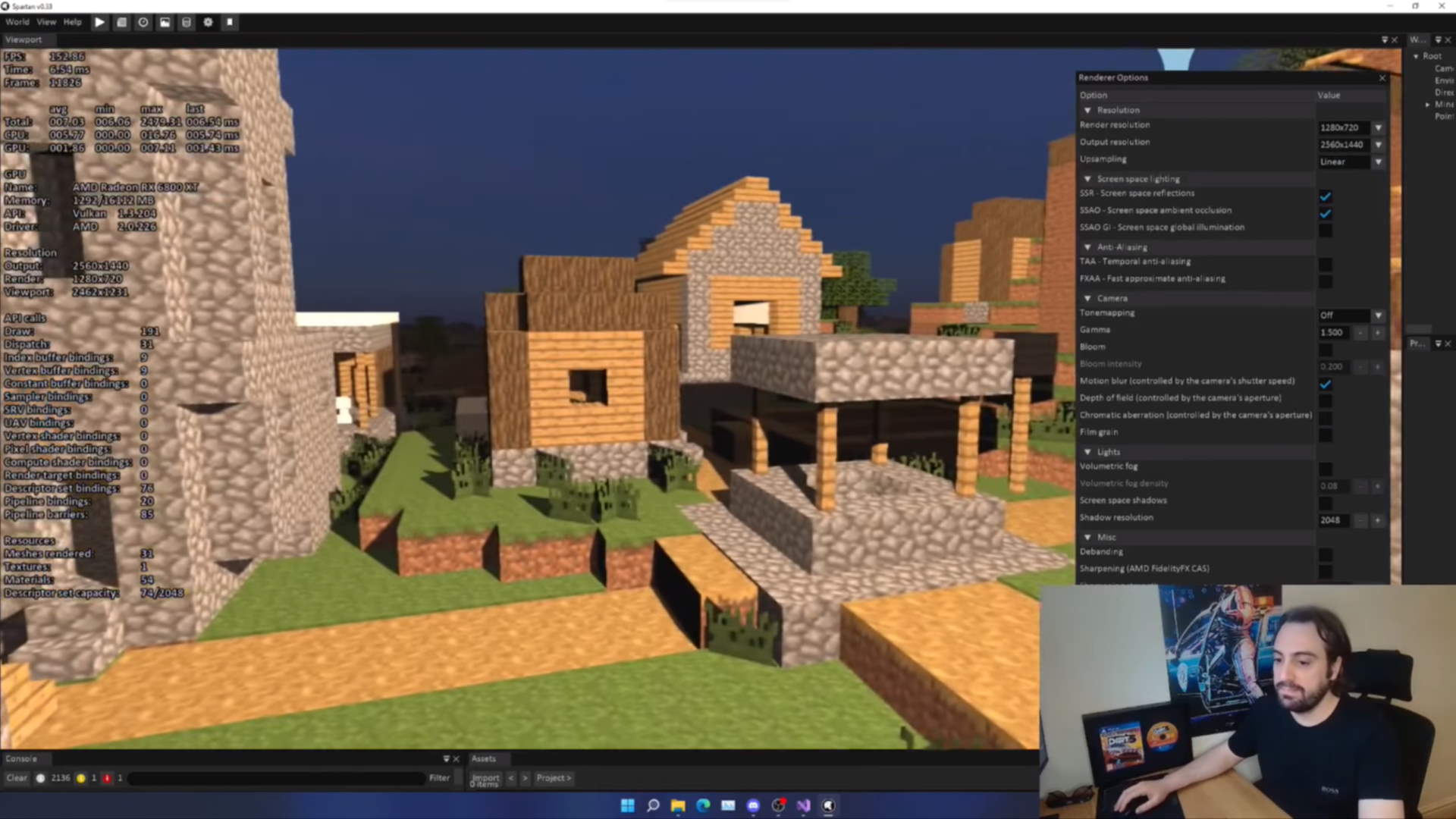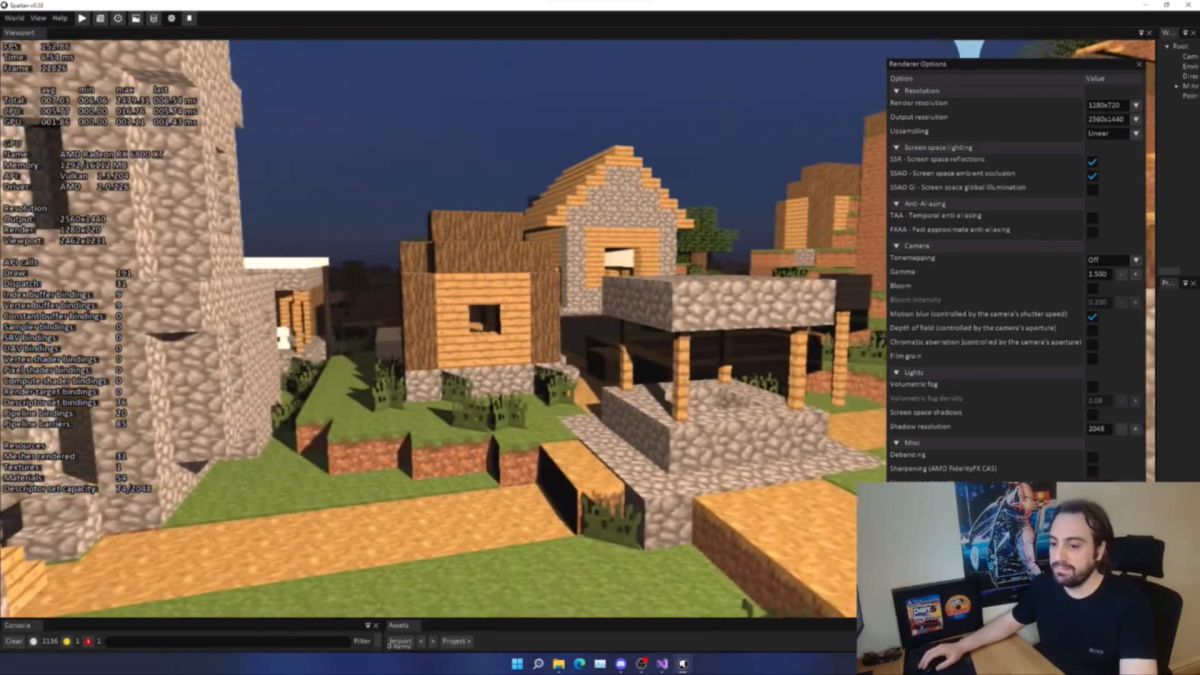[ad_1]

Since going open source, AMD’s FidelityFX Super Resolution 2.0 tech has been hacked and modded into a host of different games (opens in new tab). But thanks to a Discord livestream that was uploaded to YouTube, we can get a peak behind the curtain at just how straightforward it is to add FSR 2.0 into a game engine from scratch.
Panos Karabelas is a former Codemasters rendering programmer, now AMD software development engineer. But he’s only been with the red team a matter of months, which means he was nothing to do with the development of the upscaling tech, and says he’s never actually used it before.
So, how better to get acquainted with your new employers’ shiny technology than showing off your coding skills in a livestream?
Using his own Spartan Engine (opens in new tab), a personal open source C++ playground, Karabelas demonstrates the entire process from downloading the repository on Github, jamming it into Visual Studio and then coding it into his engine from scratch in less than 60 minutes.
The first thing he notes is the “amazingly good documentation… it’s massive,” he says. “They explain everything… It’s one of the reasons I felt so confident about doing this live.
“If you have a modern engine, it should be easy. If your engine is a little bit older tech, there is more work to do.”
You can watch the entire process of implementing FSR 2.0 in real time because it takes him so little time. He does note that he has experience of upscaling from working on Dirt 5, but that was before FSR 1.0 was even born.
And it compiles first time. He hits into an initial snag with first jitter and then velocity, but in all it takes less than four minutes for Karabelas to debug the code and get AMD’s upscaler running perfectly within the blocky, Minecraft-y demo scene he uses.
He’s using a Radeon RX 6800 XT and upscaling from 1280 x 720 to 2560 x 1440 in order to really push FSR 2.0 and not give it any flexibility. And he’s visibly surprised by just how quickly he’s got the tech up and running, along with just how good it looks.
“I can hardly believe it. Wow,” he exclaims. “That’s insane, guys. You realise what just happened? FSR2 just worked like that. That’s insane. I wasn’t expecting this.”
And, in fact, it actually works better than at the native 1440p resolution, too. Karabelas demonstrates what the scene looks like at native, with some pixel crawling and shimmering in the distance. But as soon as he switches back to 720p and FSR 2.0 upscaling that all disappears leaving a remarkably stable, clear scene.
“This is a basic implementation I did,” he says. “I didn’t do reactive mask, I didn’t do transparency and composition, I didn’t enable sharpening. This is as barebones as it gets.”
And yet in such a short while FSR 2.0 is running incredibly well in a game engine which has never seen it before. If that doesn’t impress upon you just what a great job AMD has done with its second-gen upscaler I don’t know what to tell you.
[ad_2]
www.pcgamer.com
